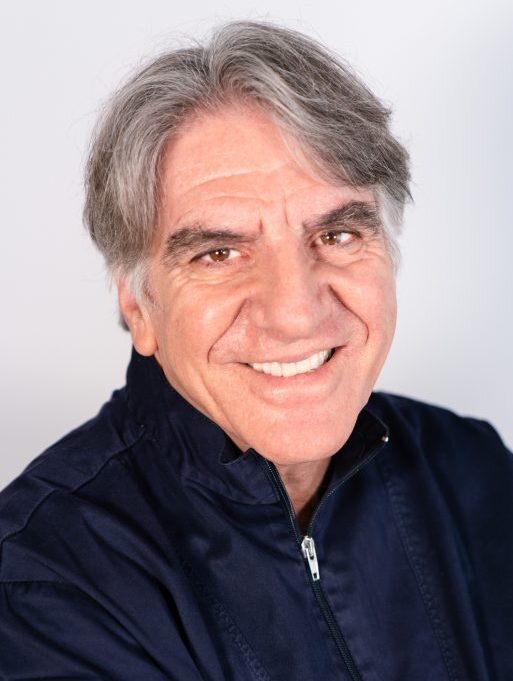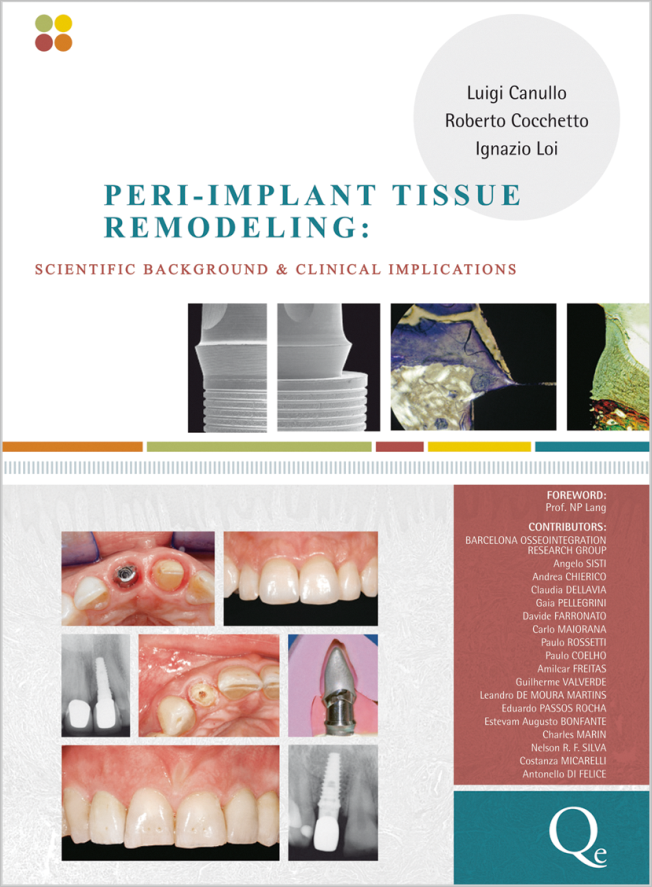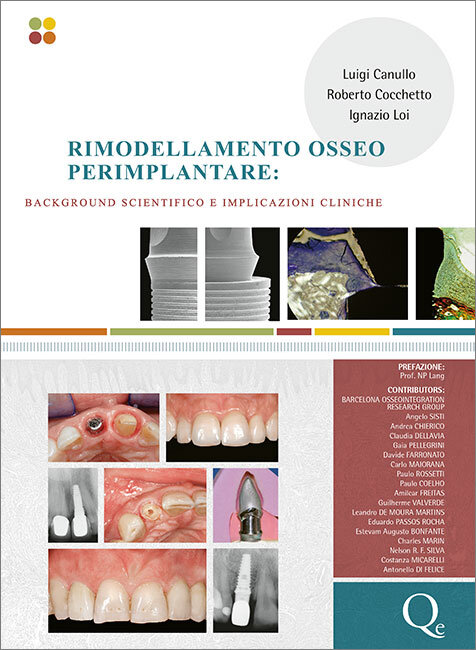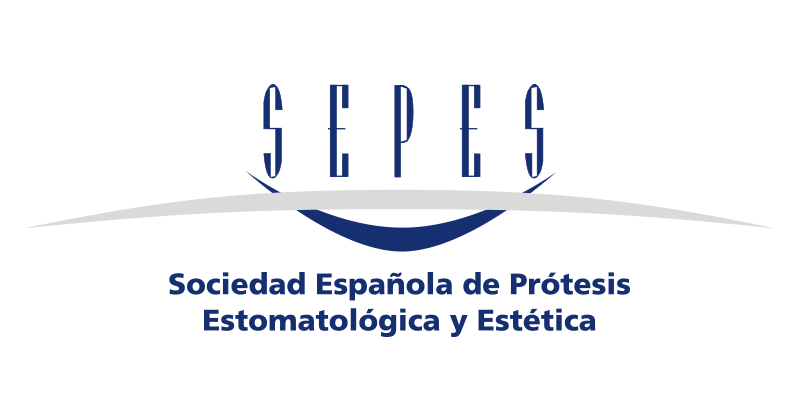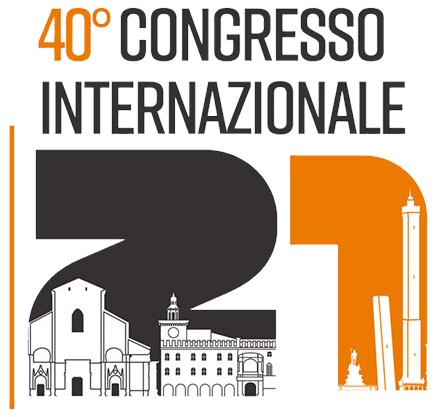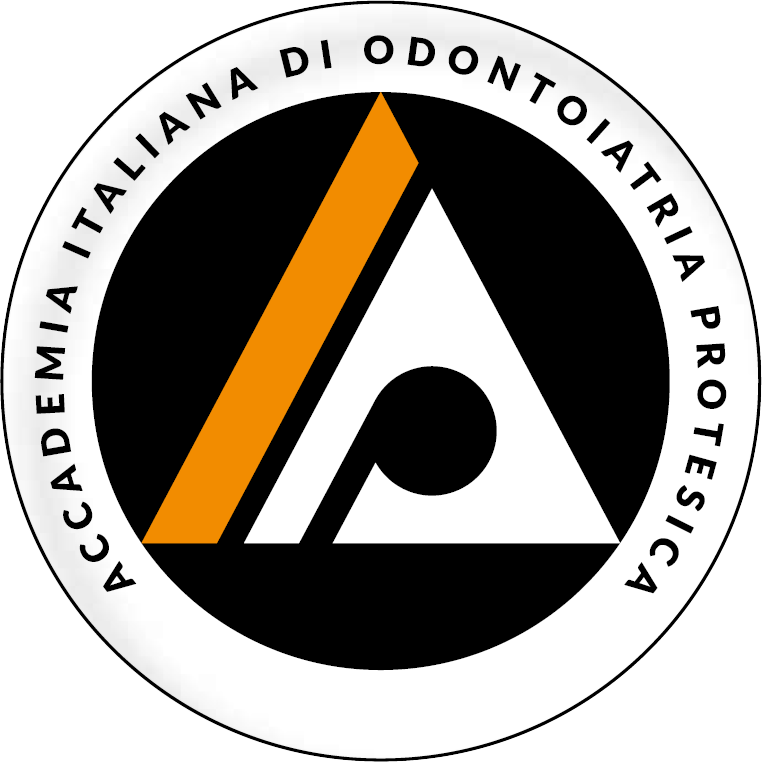International Journal of Esthetic Dentistry (EN), 1/2022
Clinical ResearchPubMed-ID: 35175009Seiten: 76-87, Sprache: EnglischDi Felice, Antonello / Abad-Coronel, Cristian / Giovane, Vincenzo / Loi, Ignazio / Pradíes, GuillermoThe biologically oriented preparation technique (BOPT) has revolutionized the execution of fixed prosthetic treatments, ensuring tissue stability and the integration of the gingival tissue with the prosthetic restorations. BOPT follows both a clinical and laboratory sequence; the two must be perfectly integrated and synchronized, with the phase of preparation and temporary restorations in the clinic correlating with a well-founded and protocolized execution of the laboratory steps. In turn, prosthetic work returned to the clinic must show perfect integration between the prosthesis, the preparation, and the periodontal tissue, with a balance between pink and white esthetics. The clinical case in the present article illustrates the close relationship between the clinical and laboratory steps, including the technical laboratory procedures, that make it possible to achieve these objectives. The aim of the article is to introduce the concept of the prosthetic adaptation profile of new restorations, establishing the definition, importance, and direct relationship of this profile with the success of the rehabilitation treatment.
International Journal of Esthetic Dentistry (DE), 1/2022
Clinical ResearchSeiten: 72-83, Sprache: DeutschDi Felice, Antonello / Abad-Coronel, Cristian / Giovane, Vincenzo / Loi, Ignazio / Pradíes, GuillermoDie biologisch orientierte Präparationstechnik (BOPT) hat die Behandlung mit festsitzendem Zahnersatz revolutioniert, da sie eine stabile Gewebesituation und hervorragende Integration der Restaurationen in den Weichgeweberahmen sicherstellt. Die BOPT umfasst zahnärztliche und zahntechnische Arbeitsschritte, die perfekt aufeinander abzustimmen sind: Die Schritte der Präparation und prothetischen Versorgung in der Praxis müssen mit einer sorgfältigen, protokollgemäßen Ausführung der Laborschritte korrespondieren. Umgekehrt müssen die an die Praxis gelieferten Restaurationen sich perfekt zwischen der Präparation und den parodontalen Geweben einfügen und zu einer ausgewogenen rot-weißen Ästhetik beitragen. Der hier vorgestellte klinische Fall zeigt die enge Wechselbeziehung zwischen den Arbeitsschritten in der Praxis und im Labor sowie die zahntechnischen Techniken, mit denen die genannten Ziele zu erreichen sind. Ziel dieses Artikels ist es, das Konzept des „prothetischen Adaptationsprofils“ neuer Restaurationen einzuführen. Hierzu werden die Definition, Bedeutung und direkte Korrelation dieses Profils mit dem Behandlungserfolg erläutert.
Quintessence International, 6/2018
DOI: 10.3290/j.qi.a40254, PubMed-ID: 29662973Seiten: 445-450, Sprache: EnglischDerchi, Giacomo / Borgia, Valentina / Manca, Enrico / Barone, Antonio / Loi, Ignazio / Covani, UgoGingival recessions have multifactorial etiology and are often associated with non-caries cervical lesions. Different surgical techniques have been proposed over the years for their treatment, according to the severity of the recession. A novel technique, called restoration guided creeping attachment (RGCA), for the treatment of combined gingival recession and non-caries cervical lesion is presented. RGCA aims at treating Miller class I and II recessions using a specifically designed composite restoration and a minimally invasive approach. A clinical case describing the technique and forming the basis for further studies is presented. Although the results obtained are encouraging, a wider number of patients and longer follow-ups are needed to assess the reliability of this technique.
Schlagwörter: composite, composite restoration, creeping attachment, gingival recession, non-caries cervical lesion
International Journal of Esthetic Dentistry (EN), 3/2017
PubMed-ID: 28717790Seiten: 306-323, Sprache: EnglischCanullo, Luigi / Tallarico, Marco / Pradies, Guillermo / Marinotti, Fabio / Loi, Ignazio / Cocchetto, RobertoAim: The purpose of this prospective cohort study was to investigate, over an 18-month period, soft and hard tissue response to a transmucosal implant with a convergent collar inserted in the anterior maxillary esthetic area.
Materials and methods: From June 2013 to January 2014, 14 consecutive patients were enrolled (7 men and 7 women; mean age 63.7 ± 14 years) with 20 implants, needing at least one implant-supported restoration between the canines in the maxillary anterior esthetic area. Six months after hopeless tooth extraction and an alveolar socket graft, a transmucosal-type implant with convergent collar walls was inserted in a midcrestal position with mini-flap surgery. An impression was taken 2 months later, and a definitive abutment with a provisional restoration was positioned. The final restoration was seated 2 weeks later. Clinical parameters, photographs, radiographs, and impressions were taken at this timepoint, and after 6 and 18 months. Using dedicated software, radiographic analysis (to detect marginal bone-level changes) and cast analysis (to detect soft tissue vertical and horizontal changes) were performed.
Results: At the 18-month follow-up, all implants were clinically osseointegrated, stable, and showed no sign of infection. At baseline, interproximal radiographs revealed no bone defect around the implant. After an initial minimal bone loss (0.09 ± 0.144 mm), radiographic analysis showed a stable condition of bone remodeling (mean value 0.09 ± 0.08; range 0.0 to 0.5 mm) at the 18-month follow-up. No statistically significant horizontal dimensional changes of the alveolar ridge were observed between each timepoint. Mean soft tissue levels significantly improved between baseline and 18 months. The mean heights of the mesial papilla (MP) and distal papilla (DP) changes were 0.38 ± 0.22 and 0.47 ± 0.31, respectively. The level of the labial gingival margin (LGM) was 1.01 ± 0.63. Periodontal parameters never exceeded the physiological levels.
Conclusions: Within the limitations of this preliminary study, the analyzed implants produced positive results in these esthetically demanding cases. This outcome should encourage long-term studies in order to assess, through controlled clinical trials, whether this convergent collar design offers advantages over other designs. Furthermore, due to the peculiar crestal module, together with the use of delayed implant insertion and a postextraction ridge preservation technique with biomimetic hydroxyapatite, the analyzed implants seem to help prevent the negative bone remodeling typically associated with two-piece implant systems, but without the well-known drawbacks of traditionally designed transmucosal implants. Therefore, wherever crestal bone preservation is a critical issue for clinical success in the anterior maxillary area can be considered of particular interest.
International Journal of Oral Implantology, 3/2017
PubMed-ID: 28944356Seiten: 279-291, Sprache: EnglischCannizzaro, Gioacchino / Gastaldi, Giorgio / Gherlone, Enrico / Vinci, Raffaele / Loi, Ignazio / Trullenque-Eriksson, Anna / Esposito, MarcoPurpose: To compare implants with machined vs roughened surfaces placed flapless in totally edentulous jaws and immediately restored with metal-resin screw-retained cross-arch prostheses. Mandibles were rehabilitated with two implants (Fixed-on-2 or Fo2) and maxillae with three implants (Fixed-on-3 or Fo3). Materials and methods: Forty edentulous or to be rendered edentulous patients (20 in the mandible and 20 in the maxilla) were randomised to the machined group (20 patients: 10 mandibles and 10 maxillae) and to the roughened group (20 patients: 10 mandibles and 10 maxillae) according to a parallel group design. To be immediately loaded implants had to be inserted with a minimum torque of 60 Ncm. Outcome measures were prosthesis and implant failures, complications and peri-implant marginal bone level changes evaluated up to 1 year post-loading. Results: Flaps were raised in four patients from the machined group. Four prostheses on machined implants and three on roughened implants were delayed for loading because a sufficient insertion torque was not obtained. There were no dropouts 1 year after loading. Two maxillary machined implants were lost in two patients (difference in proportions = 0.10; 95% CI = -0.03 to 0.23; P (Fisher's exact test) = 0.487); one maxillary Fo3 prosthesis on machined implants and one mandibular Fo2 prosthesis on roughened implants had to be remade (difference in proportions = 0; 95% CI = -0.14 to 0.14; P (Fisher's exact test) = 1.000). Five patients with machined implants had six complications vs seven patients who had eight complications at roughened implants (difference in proportions = -0.10; 95% CI = -0.38 to 0.18; P (Fisher's exact test) = 0.731). There were no statistically significant differences for implant failures, prosthetic failures or complications between groups. There were no statistically significant differences for marginal peri-implant bone levels between the two groups (estimate of the difference = -0.06 mm; 95% CI = -0.23 to 0.10; P (ANCOVA) = 0.445), with both groups losing marginal bone in a statistically significant way (0.35 ± 0.23 mm for machined and 0.42 ± 0.27 mm for roughened surface). Conclusions: These preliminary results suggest that immediately loaded cross-arch prostheses can be supported by only two mandibular or three maxillary dental implants at least up to 1 year post-loading, independently of the type of implant surface used. Longer follow-ups are needed to understand whether one of the two-implant surfaces is preferable.
Schlagwörter: dental implants, flapless, immediate loading, machined surface, rough implant surface
Conflict of interest statement: Sweden & Martina, the manufacturer of the implants used in this investigation, supported this trial, however data belonged to the authors and by no means did the sponsor interfere with the conduct of the trial or the publication of its results.
International Journal of Esthetic Dentistry (DE), 3/2017
Seiten: 286-304, Sprache: DeutschCanullo, Luigi / Tallarico, Marco / Pradies, Guillermo / Marinotti, Fabio / Loi, Ignazio / Cocchetto, RobertoZiel: Ziel dieser prospektiven Kohortenstudie war es, die Weich- und Hartgewebsreaktion auf ein transmukosales Implantat mit konvergierendem Implantathals im Frontzahnbereich des Oberkiefers über einen Zeitraum von 18 Monaten zu untersuchen.
Material und Methode: Von Juni 2013 bis Januar 2014 wurden nacheinander 14 Patienten (sieben Frauen und sieben Männer, Durchschnittsalter 63,7 ± 14 Jahre) aufgenommen. Insgesamt hatten sie 20 Implantate und brauchten mindestens eine implantatgetragene Restauration im oberen Frontzahnbereich (Zähne 13 bis 23). Sechs Monate nach der Extraktion eines nicht erhaltungswürdigen Zahns mit gleichzeitiger Socket Preservation wurde nach der Präparation von Minilappen ein transmukosales Implantat mit konvergierendem Hals in der Mitte des Kieferkamms gesetzt. Zwei Monate postoperativ wurde eine Abformung durchgeführt und ein definitives Abutment mit einer provisorischen Versorgung eingesetzt. Die definitive Restauration wurde zwei Wochen später eingegliedert. Zu diesem Zeitpunkt sowie nach sechs und nach 18 Monaten wurden klinische Parameter bestimmt und Fotografien, Röntgenbilder sowie Abformungen angefertigt. Die Röntgenanalyse (um Veränderungen am Knochenniveau festzustellen) und Modellanalyse (um horizontale und vertikale Veränderungen des Weichgewebes festzustellen) erfolgten mithilfe einer speziellen Software.
Ergebnis: Bei der Kontrolle nach 18 Monaten waren alle Implantate osseointegriert, stabil und entzündungsfrei. Zu Untersuchungsbeginn zeigten die Röntgenbilder keinen Knochendefekt um das Implantat. Nach einem geringfügigen initialen Knochenverlust (0,09 ± 0,144 mm) zeigte die Röntgenanalyse nach 18 Monaten eine stabile Knochenremodellierung (Durchschnitt: 0,09 ± 0,08; Bereich: 0,0 bis 0,5 mm). Zwischen allen Untersuchungszeitpunkten veränderte sich die horizontale Kammbreite statistisch signifikant. Das mittlere Weichgewebsniveau verbesserte sich zwischen Studienbeginn und der Kontrolle nach 18 Monaten signifikant. Die durchschnittliche Höhe der mesialen Papille nahm um 0,38 ± 0,22 mm, die der distalen Papille um 0,47 ± 0,31 mm zu. Das Niveau des labialen Mukosarands erhöhte sich um 1,01 ± 0,63 mm. Die parodontalen Parameter lagen immer im Rahmen des physiologischen Bereichs.
Schlussfolgerung: Innerhalb der Grenzen dieser Präliminarstudie wurden mit den untersuchten Implantaten in der gegebenen ästhetisch anspruchsvollen Situation positive Resultate erreicht. Dieses Ergebnis sollte Langzeituntersuchungen anregen, bei denen mithilfe kontrollierter klinischer Studien ermittelt wird, ob die konvergierende Implantathalsform Vorteile gegenüber anderen Designs bietet. Die untersuchten Implantate können offenbar dank der speziellen Halsform die Knochenresorption, wie sie für zweiteilige Implantate typisch ist, verhindern. Voraussetzungen hierfür waren auch die Socket Preservation mit biomimetischem Hydroxylapatit nach der Extraktion und die verzögerte Implantation. Die bekannten Nachteile herkömmlich geformter transmukosaler Implantate zeigten sich nicht. Wenn der Erhalt des Knochenkamms für einen Behandlungserfolg im Frontzahnbereich des Oberkiefers besonders wichtig ist, können die untersuchten Implantate deshalb eine interessante Option sein.
International Journal of Oral Implantology, 2/2016
PubMed-ID: 27314120Seiten: 143-153, Sprache: EnglischCannizzaro, Gioacchino / Loi, Ignazio / Viola, Paolo / Ferri, Vittorio / Leone, Michele / Trullenque-Eriksson, Anna / Esposito, MarcoPurpose: To evaluate the outcome of two (fixed-on-2 = FO2) versus three (fixed-on-3 = FO3) implants placed flapless in fully edentulous jaws and immediately restored with metal-resin screw-retained crossarch prostheses.
Materials and methods: Forty edentulous or to be rendered edentulous patients (20 in the maxilla and 20 in the mandible) were randomised to the FO2 group (20 patients: 10 in the maxilla and 10 in the mandible) and to the FO3 group (20 patients: 10 in the maxilla and 10 in the mandible) according to a parallel group design. To be immediately loaded, implants had to be inserted with a minimum torque of 60 Ncm. Outcome measures were prosthesis and implant failures, complications and periimplant marginal bone level changes evaluated up to 1-year post-loading.
Results: Flaps were raised in four patients and two prostheses were loaded early at 8 weeks in the FO2 group. One year after loading no dropout or implant failure occurred, however one FO2 maxillary prosthesis had to be remade because of repeated screw-loosening (risk difference = 0.05; 95% CI: -0.05 to 0.15; Fisher's exact test P = 1.000). Three FO2 patients were affected by complications versus five FO3 patients (risk difference = -0.1; 95% CI: -0.35 to 0.15; Fisher's exact test; P = 0.695). There were no statistically significant differences for prosthetic failures and complications between groups. There were no statistically significant differences for marginal peri-implant bone levels between the two groups (estimate of the difference = 0.031 mm; 95% Cl: -0.22 to 0.28; P (ancova) = 0.803), with both groups losing marginal bone in a statistically significant way (0.27 mm for FO2 patients and 0.24 mm for FO3 patients).
Conclusions: These preliminary results suggest that immediately loaded cross-arch prostheses can be supported by only two or three dental implants at least up to 1-year post-loading. Longer follow-ups are needed to properly evaluate both these therapeutic options.
Schlagwörter: All-on-2, dental implants, flapless, immediate loading, randomised controlled trial
International Journal of Oral Implantology, 2/2016
PubMed-ID: 27314121Seiten: 155-163, Sprache: EnglischCannizzaro, Gioacchino / Felice, Pietro / Loi, Ignazio / Viola, Paolo / Ferri, Vittorio / Leone, Michele / Lazzarini, Matteo / Trullenque-Eriksson, Anna / Esposito, MarcoPurpose: To compare the outcome of immediately loaded single implants with a machined or a roughened surface.
Materials and methods: Fifty patients had two implant sites randomly allocated to receive flaplessplaced single Syra implants (Sweden & Martina), one with a machined and one with a roughened surface (sand-blasted with zirconia powder and acid etched), according to a split-mouth design. To be loaded immediately, implants had to be inserted with a torque superior to 50 Ncm. Implants were restored with definitive crowns in direct occlusal contact within 48 h. Patients were followed for 6 months after loading. Outcome measures were prosthetic and implant failures and complications.
Results: Two machined implants and four roughened implants were not loaded immediately. Six months after loading no dropout occurred. One implant loaded late, which had a rough implant surface, failed 20 days after loading (P (McNemar test) = 0.625; difference in proportions = -0.04; 95% CI: -0.15 to 0.07). Three crowns had to be remade on machined implants and four on roughened implants (P (McNemar test) = 1.000; difference in proportions = -0.02; 95% CI: -0.12 to 0.08). Three machined and five roughened implants experienced complications (P (McNemar test) = 0.625; difference in proportions = -0.04; 95% CI: -0.15 to 0.07). There were no statistically significant differences between groups for crown and implant losses as well as complications.
Conclusions: Up to 6 months after loading both machined and roughened flapless-placed and immediately loaded single implants provided good and similar results, however, longer follow-ups are needed to evaluate the long-term prognosis of implants with different surfaces.
Schlagwörter: dental implants, flapless, immediate loading, implant surface, machined, randomised controlled trial
International Journal of Oral Implantology, 1/2016
PubMed-ID: 27022638Seiten: 67-74, Sprache: EnglischCannizzaro, Gioacchino / Felice, Pietro / Loi, Ignazio / Viola, Paolo / Ferri, Vittorio / Leone, Michele / Collivasone, Dario / Esposito, MarcoPurpose: To evaluate the clinical outcome of fully edentulous patients rehabilitated with immediately loaded bimaxillary screw-retained metal-resin prostheses supported by five implants placed flapless: two in the mandible and three in the maxillae.
Materials and methods: Twenty-five consecutively treated patients were recruited. To be immediately loaded, implants had to be inserted with a minimum torque of 80 Ncm. Outcome measures were prosthesis and implant failures, and complications.
Results: Six months after loading no patients dropped out and no prosthesis or implant failed. Two maxillary prostheses were loaded early at 8 weeks because implants were inserted with a torque inferior to 45 Ncm. Three complications occurred in two patients but they were all successfully treated.
Conclusions: Six months after loading, immediately loaded bimaxillary cross-arch prostheses can be supported by only two mandibular and three maxillary flapless-placed dental implants. Longer follow-ups of approximately 10 years are needed to understand the prognosis of this treatment modality.
Schlagwörter: bimaxillary edentulism, cohort study, dental implants, flapless, immediate loading
International Journal of Esthetic Dentistry (DE), 1/2013
Seiten: 10-24, Sprache: DeutschLoi, Ignazio / Di Felice, AntonelloEine Zahnpräparation für eine festsitzende prothetische Versorgung kann unterschiedlich durchgeführt werden, grundsätzlich gibt es zwei Ansätze: entweder eine Präparation mit einer definierten Präparationsgrenze oder eine vertikale oder auslaufende Präparation. Letztere wurde ursprünglich für die Versorgung von Zähnen nach einer resektiven Parodontaltherapie eingesetzt. In diesem Beitrag stellt der Autor eine prothetische Technik zur Versorgung parodontal gesunder Zähne mit einer auslaufenden Präparation ohne Lappenbildung sowohl im ästhetischen als auch posterioren Bereich vor, bei der metallkeramische und Zirkonoxidversorgungen eingesetzt werden. Mit diesem Vorgehen können bei der Stabilität der Weichgewebe klinisch hochwertige und ästhetische Ergebnisse im Bereich der Restorationsübergänge erreicht werden, sowohl kurz- als auch langfristig (klinische Nachuntersuchung über 15 Jahre). Die BOPT (Biologisch orientierte Präparationstechnik) ist im Vergleich zu anderen Präparationsmethoden (Hohlkehle, Stufe etc.) einfacher und effizienter ausführbar, von der Präparation über die Abformung, die Anpassung der provisorischen Kronen und die Ausformung des Kronenprofils bis hin zur definitiven prothetischen Versorgung.



